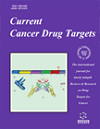
Full text loading...
We use cookies to track usage and preferences.I Understand
Hepatocellular carcinoma (HCC) remains one of the most lethal cancers globally. Despite advancements in immunotherapy, the prognosis for patients with HCC continues to be poor. As oxidative stress plays a significant role in the onset and progression of various diseases, including metabolism-related HCC, comprehending its mechanism in HCC is critical for effective diagnosis and treatment.
This study utilized the TCGA dataset and a collection of oxidative stress genes to identify the expression of oxidative stress-related genes in HCC and their association with overall survival using diverse bioinformatics methods. A novel prognostic risk model was developed, and the TCGA cohort was divided into high-risk and low-risk groups based on each tumor sample's risk score. Levels of immune cell infiltration and the expression of immune checkpoint-related genes in different risk subgroups were analyzed to investigate the potential link between tumor immunity and oxidative stress-related features. The expression of model genes in actual samples was validated through immunohistochemistry, and their mRNA and protein expression levels were measured in cell cultures.
Four oxidative stress-related genes (EZH2, ANKZF1, G6PD, and HMOX1) were identified and utilized to create a predictive risk model for HCC patient overall survival, which was subsequently validated in an independent cohort. A correlation was found between the expression of these prognostic genes and the infiltration of tumor immune cells. Elevated expression of EZH2, ANKZF1, G6PD, and HMOX1 was observed in both HCC tissues and cell lines.
The combined assessment of EZH2, ANKZF1, G6PD, and HMOX1 gene expression can serve as an oxidative stress risk model for assessing HCC prognosis. Furthermore, there is a correlation between the expression of these risk model genes and tumor immunity.

Article metrics loading...

Full text loading...
References


Data & Media loading...
Supplements

